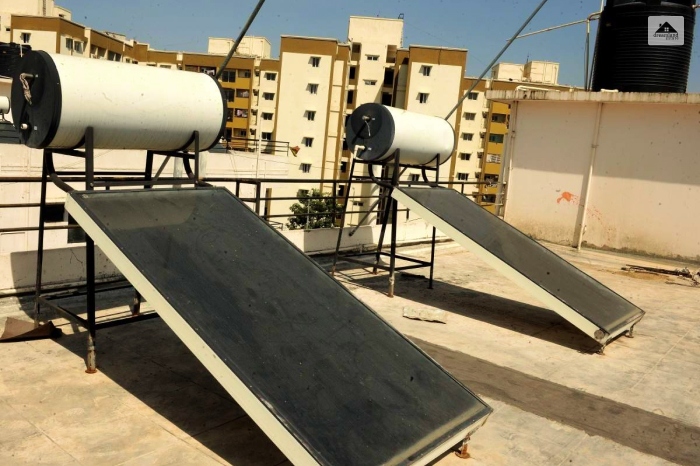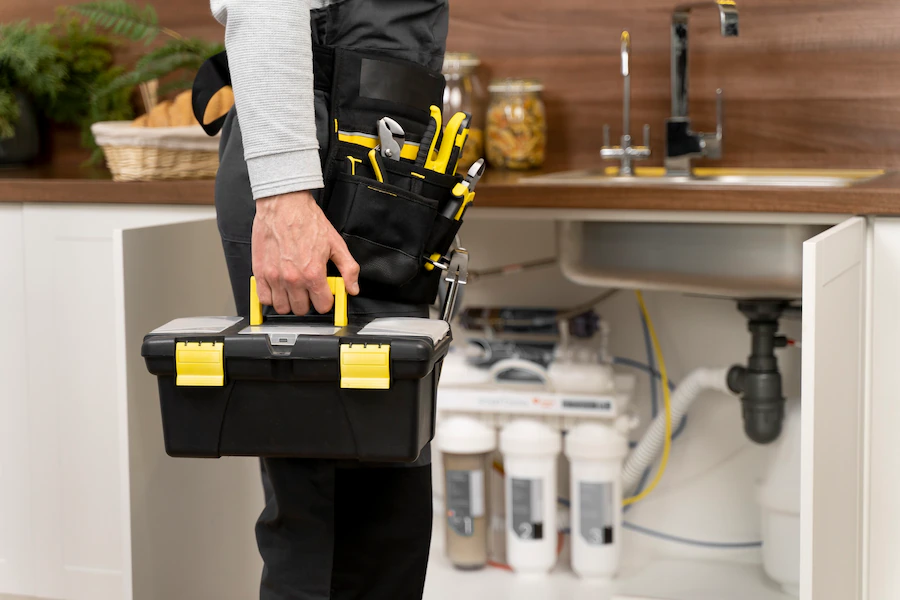Solar Heating : Definition, Techniques, Advantages And More

Most heating systems nowadays use different fluids to transfer heat throughout the space of a home. Even the solar heating system can use water or air as heat transmitting fluid to transfer heat throughout a space.
There is always an auxiliary heating system ready to provide backup to the solar heating system if the temperature is insufficient. They usually work alongside your other heating system and cut down on cost. Yes, they are free, and there are other additional benefits to using these systems.
If you want to learn about solar heating systems and how they work, read this article patiently.
Active Solar Space Heating System

Active solar heating and passive solar heating are a little different from each other. Active heating has different mechanical equipment, such as fans, pumps, and blowers. This equipment helps with the collection of heat, storage, and heating of the rooms.
Space heating using an active heating system has two different variations. Active solar space heating systems use solar collectors to collect energy from the sun. This heating system has two types based on the fluid used for collecting the solar energy – The liquid system and the air system.
Passive Solar Heating

Passive solar heating is completely natural. In this case, your whole house works like a collector that collects solar energy throughout the day. Homeowners can warm up their homes naturally by setting up the home in a way to collect heat from the sun.
For example, positioning the home’s windows south will help you capture most of the sun’s energy. The home’s open spaces can also be made to face the sun to collect as much energy as possible during the day.
Through passive solar heating, you can also store solar energy/ heat during the day.
Thermal mass can help absorb the heat during the day and slowly release it into the atmosphere after the sun has set. The thermal masses are usually concrete slabs, brick walls, and the tiles of the floor.
Read More: 10 Things About Boiler Heating Systems You Should Know
How Does Solar Heating System Work?

Here is the step-by-step breakdown of how the heating systems work –
Step 1
The solar heating system can work with the basic and the existing hydronic heating system. There is a fluid circulating inside the solar collector. Typically, corn glycol is used for this purpose. Then the fluid gets transferred to the fluid tank back again.
Step 2
When the heated fluid gets circulated through the storage tank, the water inside gets heated. The water’s temperature inside the tank can reach 130 F to 175 F.
Step 3
There is a heat exchanger in the storage tank, and the hot water gets circulated through the heat exchanger in the storage tank. When the water passes through the heat exchanger, it gets warm. The warm water is then returned to the heating system.
This way, you can keep the heating system off or shorten the time it runs for. This way, your home is getting warm by the free energy.
Step 4
There is an added heat exchanger allowing the users to heat the water if they need it.
Different Benefits Of Solar Heating

Cutting down on cost is one of the key benefits of using solar heating systems. However, they will not completely replace your existing heating system (hydronic heating/geothermal heating). But these heating systems will definitely cut down on your yearly electricity cost.
- The average American family usually spends more or less than $2000 yearly in heating costs. The heating systems relying on oil, fuels, and gas are increasing in cost daily. Solar heating can reduce their use as a supplementary and reduce cost.
- The solar heating system uses the free heat radiated by the sun. They can significantly reduce winter electricity bills. With solar heating, you can also heat water for domestic use.
- Constant use of fossil fuels like oil, gas, petroleum, propane, and more is increasing the amount of greenhouse gas in the environment. The use of solar heating pumps can minimize pollution.
- If the solar heating systems collectors are tested, rated, and certified by the SRCC, you will get some financial incentives. For instance, you get the federal 30% tax credit.
Application Of Solar Heating Systems
Users can apply solar heating systems with any other type of heating system.
If you want to hear your home using this heating system, you can resort to the below methods.
Solar Heating With Radiant Floor

When it comes to warming up floors, solar heating with radiant floors is a cost-effective solution. This technique uses water in medium to low temperatures.
It is also one of the most effective and simplest ways of warming up your room. Most heating systems use warm water ranging between 90F to 120 F in temperature. Solar heating can provide water with a temperature of up to 140 F easily.
You can size the solar heating system in small sizes to provide a supplement to your existing heating solution. In doing so, solar heating can lower your cost by 20% to 30%.
Solar Heating Using Low Temperature

It seems a little luxurious to install a heating system with energy costs spiking rapidly every year. But thanks to solar heating coupled with low-temperature baseboards, you can reduce that cost.
Most low-temperature baseboards require a temperature between 120F and 140F. This is nothing difficult for solar heating systems.
Usually, in this type of heating application, the solar heater helps to provide warmth for the home during the day, cutting down 50% of the heating cost in the process.
Solar Heating With Forced Hot Air

Solar heating systems also work in conjunction with FH systems. Usually, in this case, the heating system does not use hot water; instead, it uses air, and it is the year with electric heaters, propane, or other fuels.
Read More: What Is A Furnace? Types, Uses, And More
Bottom Line
Both active and passive solar heating work pretty well to provide the necessary heat your home needs. However, the amount of heat a solar heating system can generate is not quite enough compared to heating systems with regular energy sources. Indeed, it would help to accompany solar heating with hydronic heating or other heating systems.
I hope that this article was helpful; however, if you have any additional queries about the same, you can let us know through the comment section below.
Read Also:











Leave A Reply